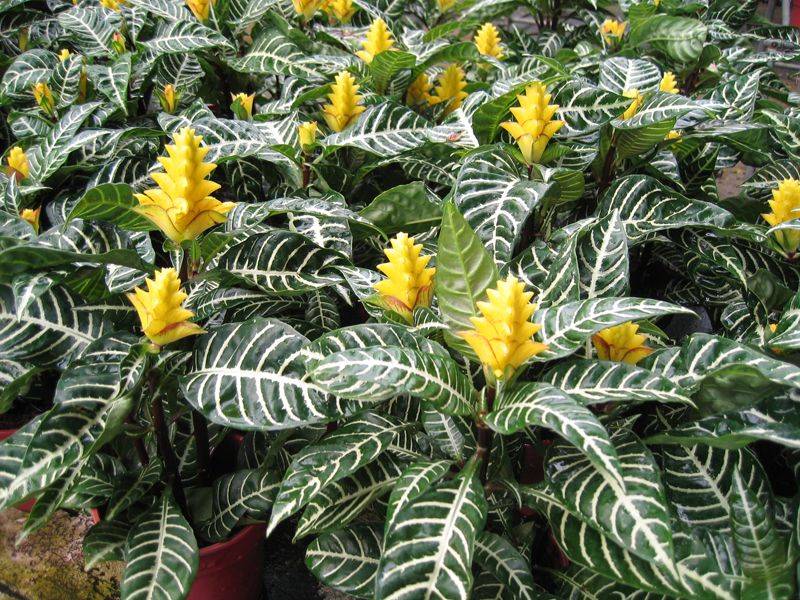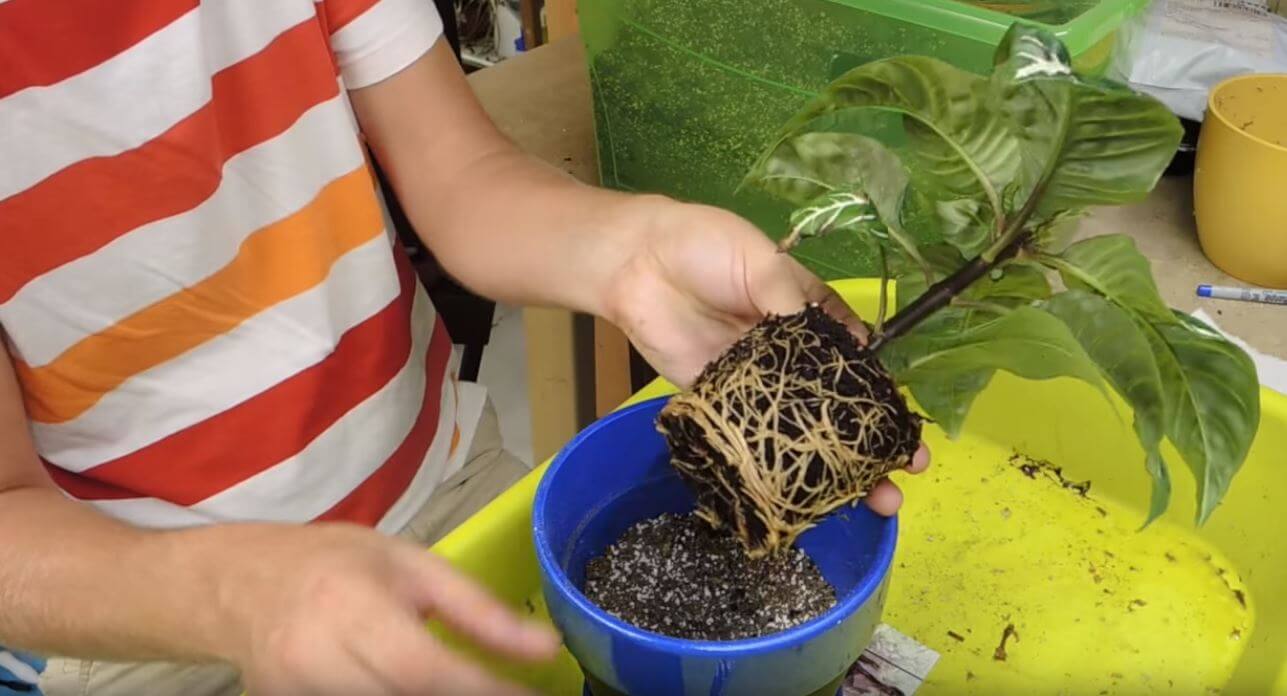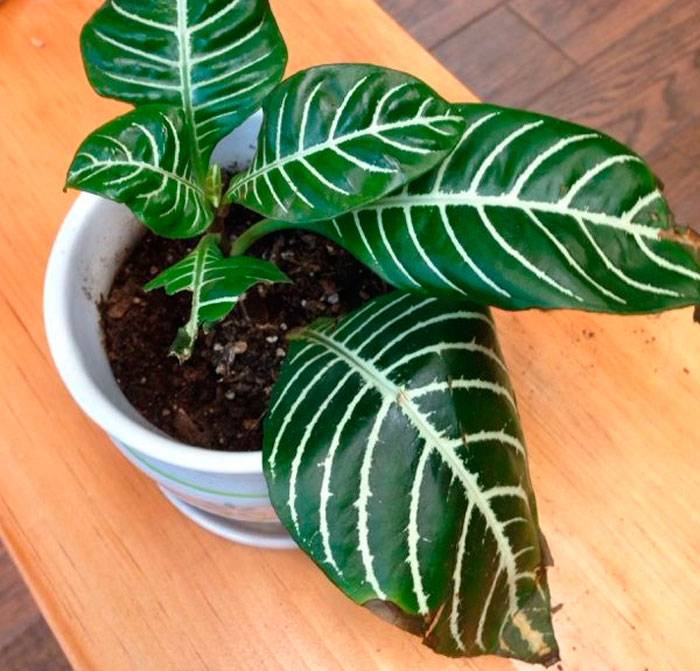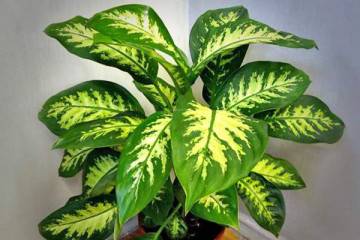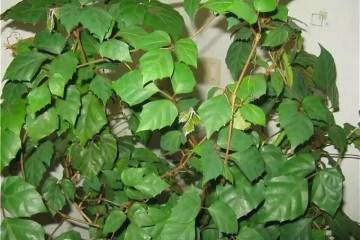Afelandra - home care
Content:
Tropical plants give the room a vibrant color. In addition, original flowers ennoble the interior. Afelandra is one of the exotic plants introduced from Europe several decades ago. She quickly gained popularity among fans of spectacular flowers. The article provides information on how to care for the aphelandra at home, how to propagate, protect against diseases and pests.
What is this flower
Afelandra is a capricious flower, so it is still rarely seen on Russian windowsills. She prefers to grow in rooms with high air humidity - greenhouses or greenhouses.
Description of the plant
Afelandra belongs to the Acanthus family. The culture is native to the rainforest of the United States. In nature, a flower can grow up to 2 m, but in indoor conditions its height does not exceed 90 cm.
Afelandra has large green leaves. Some cultivars show pronounced white, silvery or cream veins. The decorative appearance of Afelandra is due to the spectacular bracts of yellow, orange or red. Their shape can be pineal or spike-shaped.
Signs
Aphelyandra, as it is also called, is not poisonous, so it can be grown even in a room where there are small children. The plant is capricious, so caring for it teaches responsibility and patience.
The flower has rounded leaves that tend upward, which attracts positive energy into the room. The meaning of the afelander flower in the house lies in the ability to help the owners in personal growth, the desire to create comfort in the home.
Varieties
Of the many varieties, two are adapted for home cultivation: orange aphelandra and thawed aphelandra. In flower shops, you can often find the second option.
Aphelandra golden (Aphelandra aurantiaca), or orange
The bushes of this variety are stunted. They have light red shoots, greenish-silvery leaves with a pointed tip. Flowers are painted in a red-orange palette, bracts are green. The length of the leaf plates is 25 cm, the height of the pointed inflorescences is 15 cm.
Protruding aphelandra (Aphelandra squarrosa), or aphelandra Squarrosa
It differs from the previous variety in glossy leaves, on which veins stand out brightly. Bracts are rich orange, yellow tubular flowers. Flowering begins in autumn and lasts 40-45 days. Afelandra Squarrosa is a flower most often found on the shelves of flower shops.
How to care
Afelandra requires constant home care. A capricious exotic needs timely watering, feeding, transplanting, humidifying the air. To give the bush a decorative look, it is subjected to shaping and pruning.
Illumination and temperature conditions
Afelandra prefers to grow in a well-lit room, but without direct sunlight.In summer, the flower can be placed outdoors, protecting it from precipitation, drafts, sun glare.
The preferred air temperature in summer is 20-25 ° С. In winter, you need to provide the plant with a dormant period, reducing the room temperature to 15-16 ° C. During this period, the flower can be transferred to the glazed balcony.
Watering rules and humidity
Afelandra is watered often and abundantly, especially an adult plant, but so that the ground is not wet all the time. After each watering, pour out excess water from the pan. Root decay can occur from excess moisture.
To increase the required air humidity, you can put small stones in the pan, pour water on top so that it does not touch the pot. Another option is to spray the air around the plant with water from a spray bottle. Periodically, afelandre can have a shower, having previously covered the ground with a film.
Top dressing and soil quality
The soil for afelandra should be loose, breathable. The substrate can be prepared independently from the following components:
- leafy land;
- sod land;
- peat;
- sand;
- charcoal.
From spring to late autumn, Afelandru is fed with a complex mineral fertilizer. Nutrients are introduced 2-3 times a month.
Flower container size
A pot for Afelandra is selected with a diameter of 15-20 cm.When planted in a large container, the growth of the plant will be slowed down. This happens because until the root system has mastered the entire volume of the pot, the aboveground part will grow poorly.
Pruning and replanting
An adult Afelandra stretches out, while the lower leaves fall off. To maintain a decorative appearance, an adult bush requires pruning. The procedure is carried out in early spring, removing the shoots by half. In order for young plants to have a lush crown, pinch the top.
After purchase, the plant is left to adapt, then transplanted into a new substrate. Old soil already contains a minimum amount of nutrients.
Flowering features
Afelandra blooms in autumn with yellow, orange or red inflorescences. Depending on the variety, they can stay on the bush from 1 to 6 weeks. To make the plant look decorative, the dried flowers are removed. In winter, the bush is kept in a cool room, watering is reduced, feeding is stopped.
Reproduction methods
You can propagate a culture in 2 ways: by seeds and cuttings. The first method is rarely used by flower growers due to the laboriousness.
Seeds
Growing a flower from seeds is done as follows:
- Mix leaf earth and sand in equal proportions.
- Pour the substrate into the box.
- Sow the seeds.
- Cover the box with glass.
The container with seedlings is placed in a warm room. Every day, the container is opened for ventilation; if necessary, the soil is moistened. The sprouted sprouts are thinned out, removing weak, not viable ones. When 4 leaves appear on the plants, they are transplanted into pots.
Cuttings
Reproduction of Afelandra is possible by apical or lateral shoots. The procedure is carried out in the spring as follows:
- Shoots 12-15 cm long are cut with at least 2 leaves.
- The lower sections are dusted with growth stimulants.
- A loose substrate is poured into the box, moistened.
- Prepared cuttings are planted.
- Cover the container with transparent wrap.
A box with seedlings is placed in a warm place. Within a month, they are sprayed and the film is opened for airing. When the cuttings take root, young leaves appear and are transplanted into pots.
Growing problems, diseases and pests
Due to mistakes in care on the part of the florist, Afelandra may lose its decorative appearance. Here's what can happen to her, and why it happens:
- the tips of the leaves dry. This means that the air in the room is dry. To remedy the situation, you need to spray the air around the flower. In winter, it should not be placed next to radiators;
- brown spots form on the leaf blades. This is due to bright sunlight falling on the leaves, as well as due to a draft;
- aphelandra grows slowly. Possible reasons: the flower was planted in heavy soil; lack of dressing;
- the lower leaves fall off. This is a natural process. Bare cuttings can be cut and rooted;
- the flower withers. Probable reasons: the plant is kept at air temperatures below 15 ° С; root rot develops;
- small, raised brown spots appeared on the leaves. This is a shield that can be easily removed by wiping the sheet plates with soapy water;
- the plant is covered with small green insects. This is an aphid that damages the flower by sucking out juices. To get rid of the pest, the bush is sprayed with an insecticide solution.
Afelandra is a beautiful flower that requires constant care from the florist. Observing all the requirements of the plant, exotic lovers will admire the beautiful leaves all year round, and in the fall - also spectacular inflorescences.


